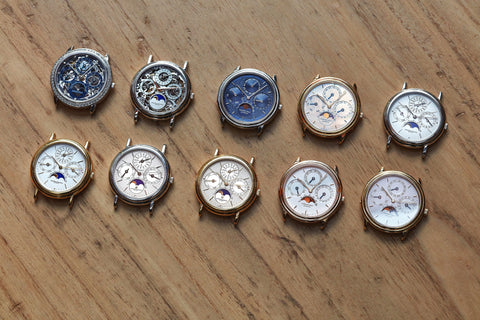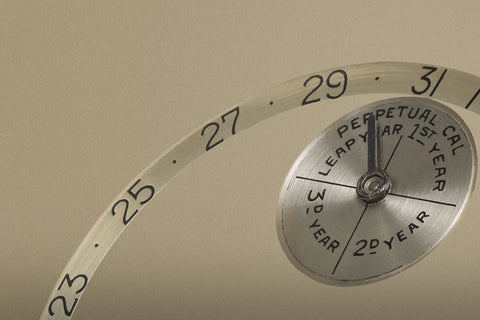One of the few ultra-thin, automatic perpetual calendars put forth by the Holy Trinity, this Vacheron Constantin reference 43031 possesses a significant history and is an excellent example of the combination of modern and traditional elements that characterises the neo-vintage period.
Over the years, the reference 43031 has been produced in a variety of dial, metal, and bracelet configurations, and these pieces are a testament to the brand’s successful weathering of the Quartz Crisis, helping revive public interest in complicated watchmaking. After a successful run, the reference was discontinued in 2002, to make way for the manufacture’s contemporary pieces.
This particular example features a classic configuration, with a plain opaline dial. The sub-dials of the piece are slightly recessed and feature a more restrained, circular finish. This creates some interesting effects when the watch interacts with the light at different angles, whilst on the wrist. The hands for the sub-dials are blackened, which adds an appealing level of contrast to the overall design. Rather interestingly, the moonphase is made out of lapis lazuli, a deep blue metamorphic rock, which has been used for jewellery and decorative objects since antiquity because of its intense colour.
Within the watch, Vacheron Constantin used the Jaeger-LeCoultre 920, which was the thinnest automatic movement in the world when it came out in 1967. They then reworked a perpetual calendar module from Dubois-Depraz, a famed module manufacturer who has supplied Patek Philippe, Audemars Piguet and Vacheron Constantin, among others. The end result was the Caliber 1120 QP, which still remains in production to this day, albeit in an updated form.
If sold within the United Kingdom, this Vacheron Constantin Perpetual Calendar Ref. 43031 will be subject to 20% VAT.
























































































































































































































